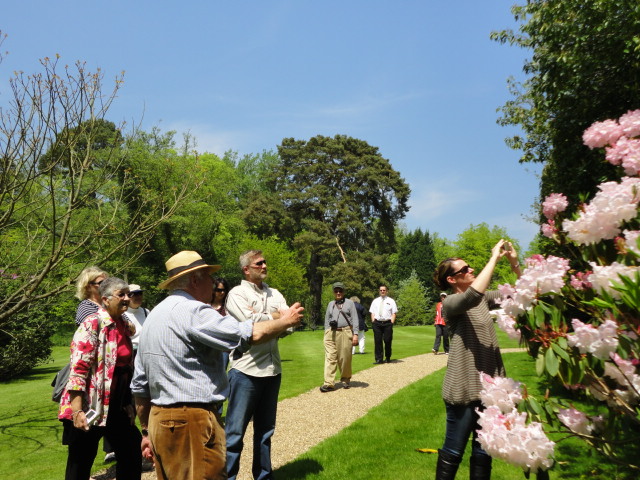Sandringham House
As we know, Sandringham House is the Norfolk home of Her Majesty, The Queen. Here is a garden of broad lawns and trees. Paths run through plantings of camellias and rhododendrons, hydrangeas, cornus and magnolia. Much of the interest is achieved by the juxtaposition of trees with different shapes, colours and textures. The specimen trees are very fine with some oaks which were planted by Queen Victoria. The mature trees around the perimeter provide the garden with a frame, separating it from the parkland beyond. Others are positioned almost as monuments. A solitary golden cedar Cedrus deodara ‘Aurea’, stands on the horizon beyond the upper lake. Elsewhere, tall thin conifers punctuate the garden.
There are not many gardens belonging to the royal family that are regularly open to the public so this is one of the very few places where its taste in gardening may be seen. On this sandy, acid soil rhododendrons do well and they flourish in the protection of the trees. Nearer the house there is an attractive formality with pleached lime walks, hedges of yew and a series of herbaceous beds enclosed by tall box hedges. On the other side of the house a stream feeds a lake whose fringes are richly planted with conifers, maples and other ornamental trees and shrubs. A long series of beds edged in box and divided by paths, is flanked by avenues of pleached limes, one of which is centred on a gold plated statue of a Bhuddist divinity. Being a Royal home, formality is the key for this garden. Plants throughout are impeccably labelled – even a clump of Alchemilla mollis.
The house itself was built in 1870 by the future Edward VII and Queen Alexandra (Queen Victoria had bought the estate for them eight years earlier). it is long and thin, and almost every window looks out from its wide eastern and western flanks to take advantage of the natural light. The garden occupies 60 of the estate’s 20,600 acres. Originally laid out for Edward and Alexandra by William Broderick Thomas during the late 19th century, but with Alexandra’s death in 1925, the death of her son, George V, in 1936 and the years of war, the estate fell into comparative disrepair. In the late fourties George VI began the restoration and replanting of the gardens with the help of landscape architect Sir Geoffrey Jellicoe. The present layout of paths and glades, beds and shrubs dates from the 1960s and is the work of Sir Eric Savill, who also created the Savill and Valley Gardens in Windsor Great Park.

 Passionate about beautiful gardens? Experience the finest gardens on one of our small and friendly group tours.
Passionate about beautiful gardens? Experience the finest gardens on one of our small and friendly group tours.
 Ready to book?
Ready to book? 
